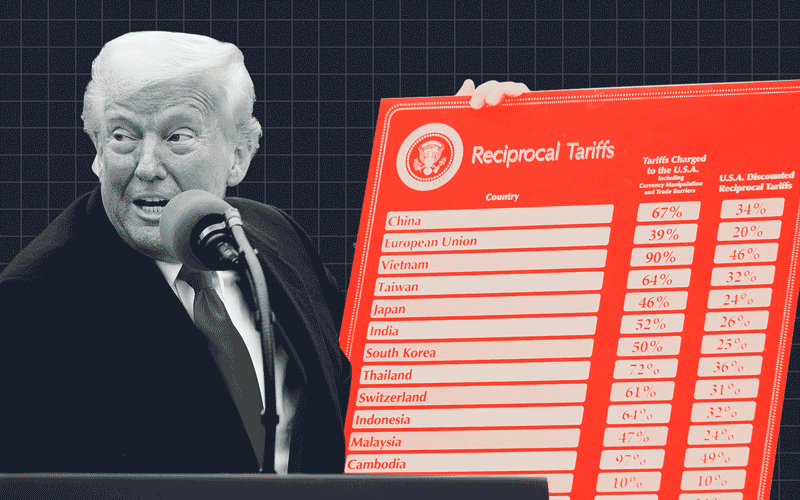The rental market in New York City is as tight as ever, and the economic uncertainty gripping the nation only figures to make it tighter.
Manhattan’s median rent punched in at $4,495 in March, in line with the $4,500 record set in February and leaps and bounds above last year’s metric, according to a report by the appraiser Jonathan Miller for Douglas Elliman.
The price represents a nearly 10 percent increase from March 2024, the greatest annual jump since May 2023. In Brooklyn, the median rent hit $3,700, a 6 percent pop year over year; In Queens, it touched $3,450, nearly 8 percent more than a year ago.
For years, the story of rising rents was largely about interest rates. As the Federal Reserve hiked rates, would-be homebuyers were dissuaded by higher borrowing costs, delayed their purchase plans and instead, held fast to leases. The trend drove up rents.
Now, it’s President Donald Trump’s volatile policy decisions driving the bus.
“We’re at peak uncertainty,” Miller said. “There is no apparent plan or strategy.”
Trump, who has been teasing hefty tariffs since taking office in January, last week announced a baseline 10 percent tariff on nearly all nations, then tacked on reciprocal tariffs for 60 countries. Chaos ensued: Wall Street freaked, the S&P 500 suffered a correction, and mortgage rates and projections of recession risk resultingly surged.
Market mayhem is no friend to investment, and New York City brokers told Real Tactics Pro buyers immediately began backing out of deals. Though that stymied activity was not reflected in Miller’s March report, mounting uncertainty was.
Rents remained near records last month because prospective buyers, eyeing economic upheaval, weren’t chomping at the bit to buy their first home. Nor were they jumping to pay the higher mortgage rates Trump’s global trade shakeup drove.
On Wednesday afternoon, the White House rolled back a key piece of its tariff plan, instituting a 90-day pause on reciprocal tariffs. The outlier was China, which was hit with an even higher rate of 125 percent “based on the lack of respect that China has shown to the World’s Markets,” Trump wrote on Truth Social.
Otherwise, the baseline 10 percent, and seemingly, the 25 percent tariff on steel and aluminium, remain in effect, the AP reported Wednesday.
That capitulation introduces more unknowns: How long will the pause last? What tariffs remain when it ends? What’s the likelihood of recession now?
“I think it re-emphasizes that we’re in an environment of uncertainty,” Sam Chandan, director of NYU Stern’s Chen Institute for Global Real Estate Finance said.
“It will be some time before we find ourselves in an environment that we would describe as stable, again,” he added.
That means mortgage rates are still likely to rise, pushing rents higher.
The city’s renters will only catch a break if things get really ugly. That is: “If Trump’s tariffs drive a recession, which means a lot of job loss,” Miller said.
Higher unemployment means fewer New Yorkers can afford their $4,500 apartments. If those renters then leave the city, their exodus frees up supply, which could push down rents or at least soften the pace of gains.
But that’s one potential long view. In the near-term, homebuyers are likely to freeze in wait and see mode, stoking rent growth as peak leasing season is just heating up.
Read more



